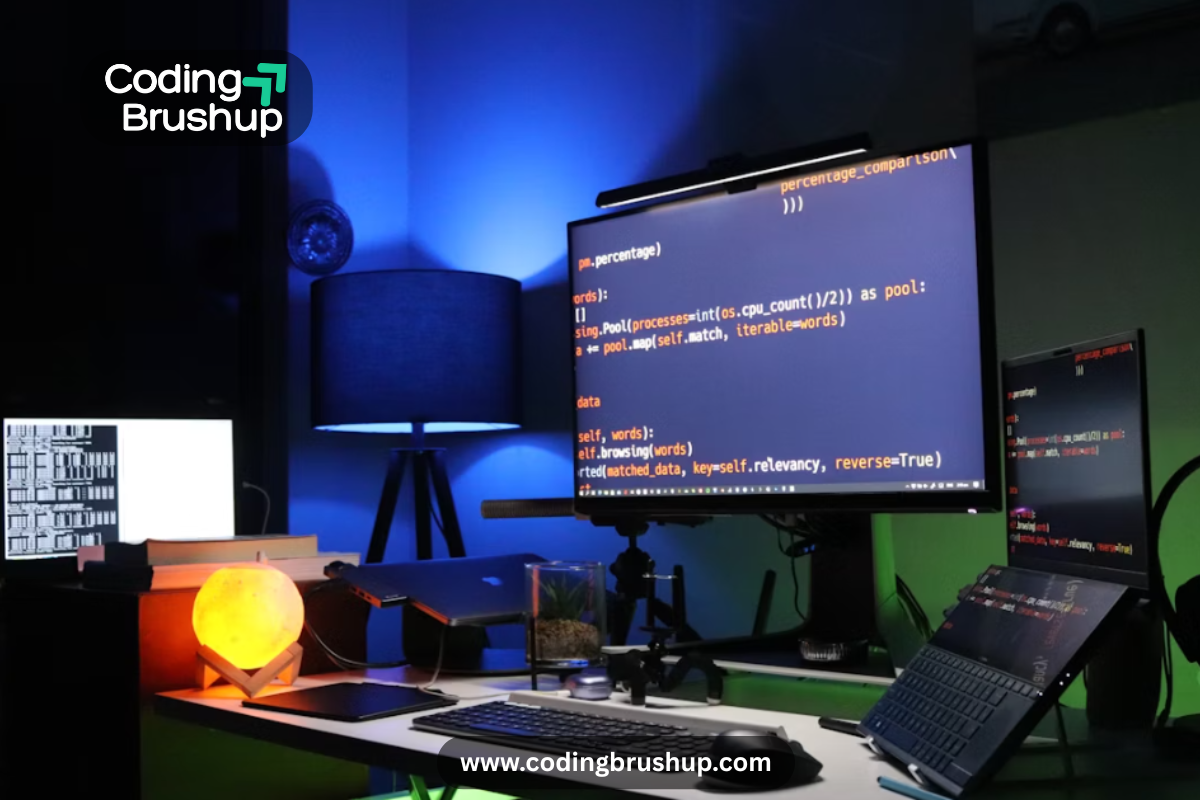Currently Empty: $0.00
Blog
How to Get Started with Data Science Projects

Are you fascinated by the power of data? Do you dream of uncovering hidden insights, building predictive models, and making data-driven decisions that can change the world? If so, you’re in the right place! Data science is one of the most exciting and in-demand fields today, offering endless opportunities for innovation and impact. But how do you go from being an aspiring data enthusiast to successfully completing your own data science projects?
It can feel a bit daunting at first, can’t it? With so many tools, techniques, and concepts to learn, where do you even begin? Don’t worry, you’re not alone! This comprehensive guide is designed to help you navigate the initial steps, providing you with a clear roadmap to kickstart your data science project journey. Get ready to transform your curiosity into concrete, impactful data science solutions!
1. Laying the Foundation: What’s Your Data Science Why?
Before diving headfirst into code and algorithms, let’s take a moment to understand your motivation. Why do you want to start a data science project? Are you looking to:
- Build a portfolio to land your dream job?
- Solve a real-world problem you’re passionate about?
- Learn a new skill or deepen your understanding of a specific technique?
- Explore a fascinating dataset just for the sheer joy of discovery?
Understanding your “why” will be your guiding star throughout the project. It helps you stay focused, choose relevant projects, and, most importantly, keeps you motivated when challenges inevitably arise.
Choosing Your First Project: Keep it Simple, Keep it Engaging!
For your initial foray into data science projects, the golden rule is to start small and simple. Don’t try to solve world hunger with your first project! Instead, pick something manageable that allows you to grasp the fundamental concepts without getting overwhelmed.
Think about datasets that are readily available and clean. Websites like Kaggle are treasure troves of datasets, complete with ready-made problem statements and even starter code. Look for datasets that pique your interest – maybe it’s cricket statistics, movie ratings, or even weather data from your city. The more engaged you are with the data, the more enjoyable and effective your learning process will be.
2. The Data Science Project Lifecycle: Your Blueprint for Success
Every successful data science project generally follows a structured approach. Understanding this lifecycle will provide you with a robust framework, ensuring you don’t miss any critical steps.
a. Problem Definition: What Are We Trying to Solve?
This is perhaps the most crucial step. A well-defined problem is half the battle won. Ask yourself:
- What specific question am I trying to answer?
- What problem am I trying to address?
- What does “success” look like for this project?
For instance, instead of “Analyze movie data,” a better problem definition would be: “Predict the box office success of new movies based on their genre, cast, and director.”
b. Data Collection & Acquisition: Where’s the Treasure?
Once you know your problem, you need data to solve it! This involves:
- Identifying data sources: APIs, databases, public datasets (Kaggle, UCI Machine Learning Repository), web scraping.
- Collecting the data: Downloading CSVs, making API calls, writing scripts.
- Understanding data privacy and ethics: Especially crucial when dealing with sensitive information.
Remember, the quality of your insights is directly proportional to the quality of your data.
c. Data Cleaning & Preprocessing: Taming the Wild Data
Real-world data is messy – full of missing values, inconsistencies, and errors. This step, often the most time-consuming, involves:
- Handling missing values: Imputation, deletion.
- Dealing with outliers: Identifying and managing extreme values.
- Correcting errors and inconsistencies: Standardizing formats.
- Feature engineering: Creating new features from existing ones to improve model performance.
Think of it as preparing your ingredients before you start cooking!
d. Exploratory Data Analysis (EDA): Let the Data Speak!
EDA is where you get to know your data intimately. It’s about visualizing, summarizing, and understanding the patterns and relationships within your dataset.
- Statistical summaries: Mean, median, standard deviation.
- Visualizations: Histograms, scatter plots, box plots, bar charts.
- Correlation analysis: Identifying relationships between variables.
EDA helps you formulate hypotheses, identify potential issues, and guide your modeling choices.
e. Modeling: Building Your Predictive Engine
This is where the magic happens! Based on your problem and data, you’ll choose and apply appropriate machine learning algorithms.
- Supervised learning: Regression (predicting continuous values) or Classification (predicting categories).
- Unsupervised learning: Clustering (grouping similar data points) or Dimensionality Reduction.
Don’t worry about mastering every algorithm at once. Start with simple models like Linear Regression or Decision Trees and gradually explore more complex ones.
f. Evaluation & Deployment: How Good is Your Model?
Once you have a model, you need to evaluate its performance using relevant metrics (e.g., accuracy, precision, recall, F1-score for classification; R-squared, MSE for regression).
If the model performs well, you might consider deploying it, making its predictions accessible for real-world use – perhaps as a web application or an API. For a beginner project, simply presenting your results and insights effectively is a fantastic achievement!
3. Essential Tools for Your Data Science Toolkit
To bring your projects to life, you’ll need a set of powerful tools. Here’s a comparison of some common choices:
| Tool/Language | Primary Use Case | Key Advantages | Considerations |
| Python | General-purpose programming, ML, web development | Vast libraries (Pandas, NumPy, Scikit-learn), large community | Can be slower than R for some statistical tasks |
| R | Statistical analysis, data visualization | Excellent for statistical modeling, strong graphics | Steeper learning curve for general programming |
| SQL | Database management, data querying | Essential for working with structured data | Primarily for data retrieval, not for analysis or modeling |
| Jupyter Notebooks | Interactive coding, documentation | Combines code, output, and explanations in one document | Not ideal for large-scale application development |
| Power BI / Tableau | Business Intelligence, interactive dashboards | User-friendly drag-and-drop interface, powerful visuals | Primarily for reporting, less for advanced ML modeling |
For beginners, Python with its ecosystem of libraries (Pandas, NumPy, Matplotlib, Scikit-learn) and Jupyter Notebooks is often the recommended starting point due to its versatility and extensive community support.
4. Learning and Growing: Resources and Best Practices
The journey into data science is a continuous learning process. Here are some tips and resources to help you along the way:
Online Learning Platforms
- Coursera, edX, Udemy: Offer structured courses from top universities and industry experts.
- Kaggle Learn: Free micro-courses covering essential data science topics.
- YouTube: Countless tutorials and explanations on specific concepts and tools.
Community Engagement
- Kaggle Competitions: Apply your skills, learn from others’ solutions, and build your portfolio.
- GitHub: Share your projects, collaborate with others, and explore open-source contributions.
- LinkedIn & Data Science Meetups: Network with professionals, ask questions, and stay updated on industry trends.
Best Practices for Beginners
- Version Control (Git/GitHub): Learn to track your code changes. It’s a non-negotiable skill!
- Clean Code: Write readable and well-commented code. Your future self will thank you.
- Documentation: Explain your process, assumptions, and findings.
- Don’t Fear Errors: Errors are your best teachers. Debugging is a core data science skill.
- Practice, Practice, Practice: The more projects you attempt, the better you’ll become.
5. Your First Step Forward: Action Plan!
Ready to take the plunge? Here’s a quick action plan to get you started:
- Define your “why”: What motivates you to do data science?
- Pick a simple, engaging dataset: Head over to Kaggle and find something interesting.
- Set up your environment: Install Python, Jupyter Notebooks, and essential libraries.
- Start with Problem Definition: What question will your project answer?
- Begin the lifecycle: Collect, clean, explore, model, and evaluate!
Remember, every data scientist, no matter how accomplished, started exactly where you are now. The most important thing is to just begin. Embrace the challenges, celebrate the small victories, and enjoy the incredible journey of discovery that data science offers.
What project are you excited to start first? Share your ideas in the comments below – let’s inspire each other! Happy data-sciencing!

